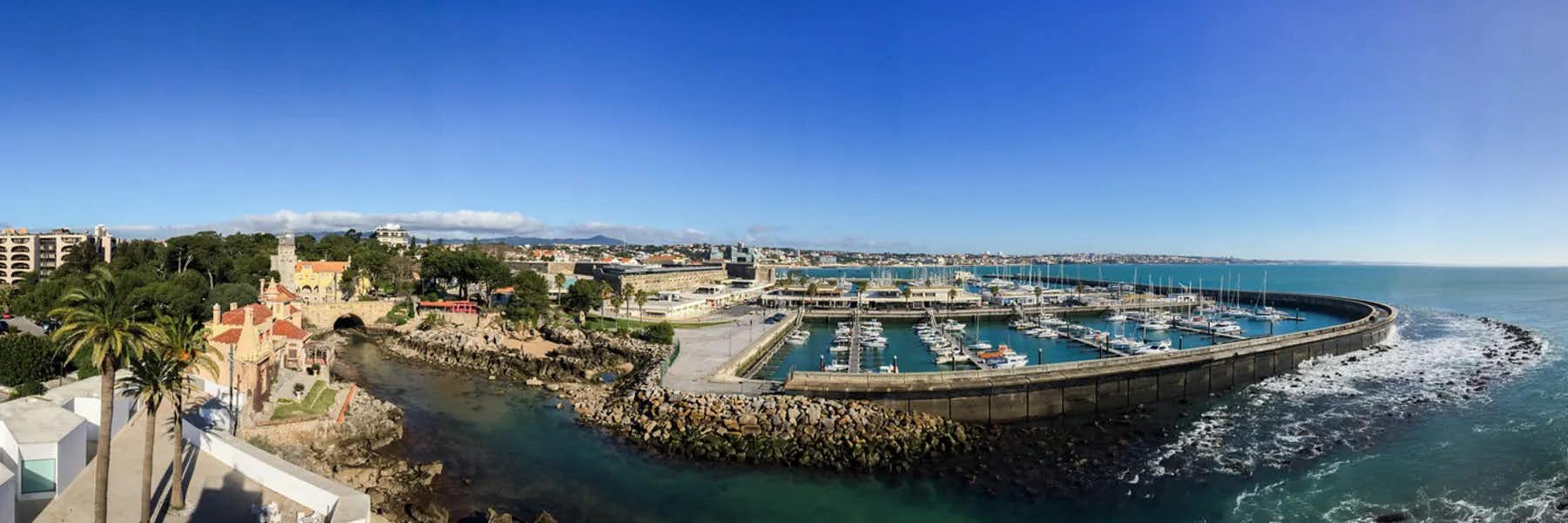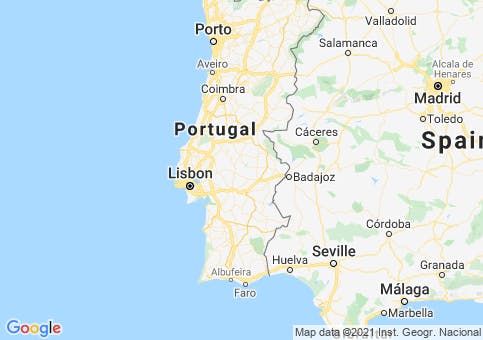By Terry Coles
Portugal boasts some of the best weather in Europe, offering plenty of summer sunshine and mild to cold winters, depending on location.
Weather in Portugal is temperate and influenced by the Atlantic Ocean. The climate is cool and wet in the north and central regions, but moving south, it becomes drier and warmer.
The interior of the country shares a border with Spain and offers more of a continental climate, with colder winters and hot, dry summers.
In the summer, Portugal is protected by the Azores High (a subtropical center of high atmospheric pressure), which brings abundant sunshine almost everywhere in the country. The occasional passing front can still bring rain to the north.
The southernmost region of the Algarve has a dry and sunny microclimate, with mild winters and warm to hot, dry summers.
The weather is extreme in the Alentejo, the south-central region, and is characterized by scorching, hot, dry summers and frigid winters.
Get Your Free Portugal Report Today!
Get Your Free Portugal Report Today!
Discover why we love a slower pace of life in Portugal and info on other European countries in our daily postcard e-letter. Simply enter your email address below and we’ll send you a FREE REPORT – Explore the Old World in Laidback Portugal.

By submitting your email address, you will receive a free subscription to IL Postcards and special offers from International Living and our affiliates. You can unsubscribe at any time, and we encourage you to read more about our Privacy Policy.
Regional Differences
As compact as Portugal is, about 349 miles north to south and only 135 miles east to west, there are distinct differences when it comes to climate within its borders. The country can be divided into five climatic areas—meaning in Portugal you’re sure to find a place with the climate to suit your tastes to make your retirement home.
North Coast
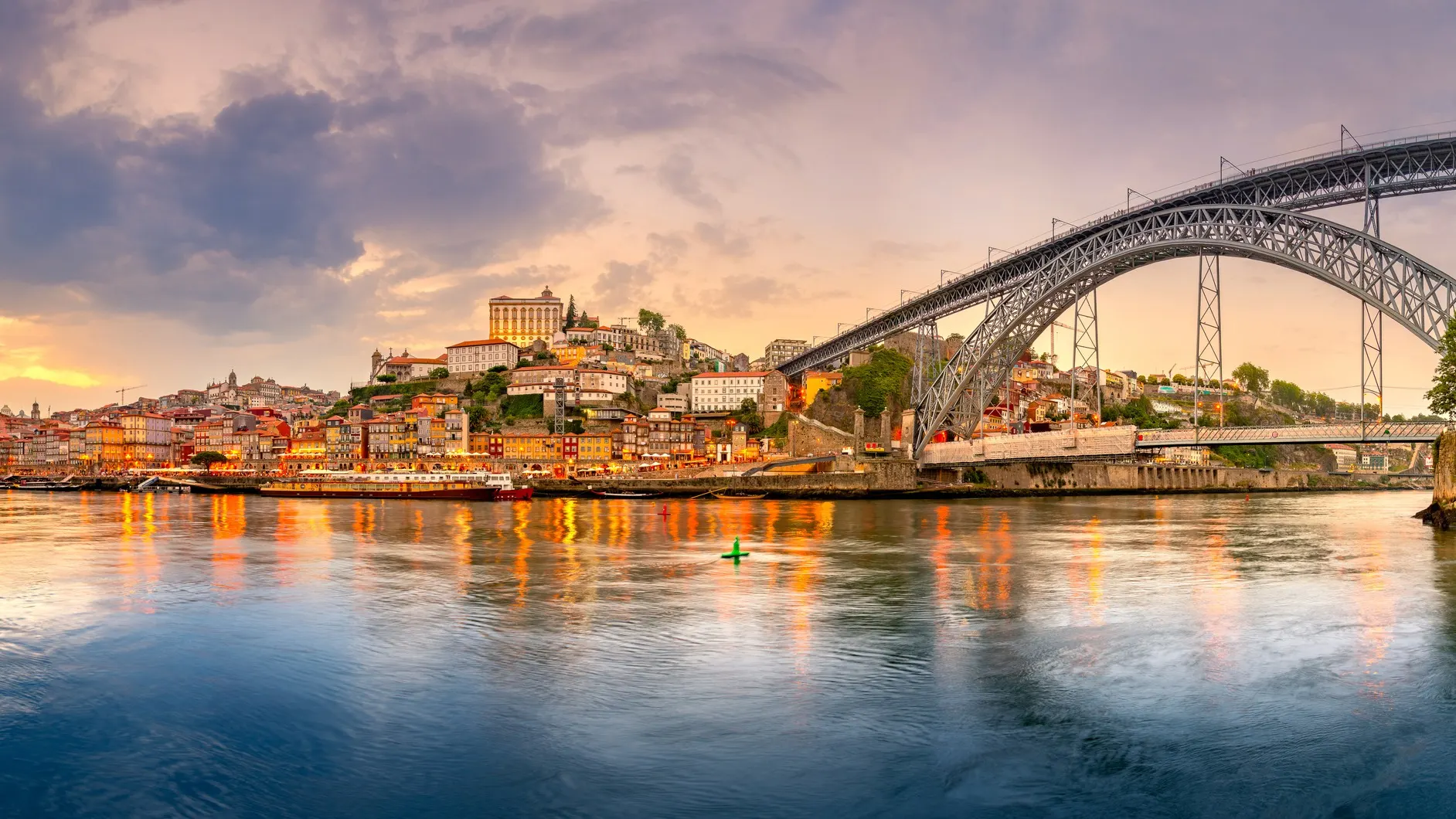
This area runs from the Minho River, dividing Spain and Portugal, to south of the Douro River.
The Douro River flows between Porto, considered Portugal’s “second city,” and Vila Nova de Gaia, home to the centuries-old wine houses. Summers in the area are pleasantly warm to Springlike. A day at the famous wind-surfing beach of Esposende, just north of Porto, will be in the high 70s F to mid-80’s F with brilliant blue skies and moderate humidity and rain is a rarity.
In autumn temperatures cool to the high 50s F and mid-60s F, with periodic showers. You’ll need to take out your overcoat come December, when temperatures drop to high 30s F to mid-40s F, and the rainy season (until April) really gets under way. All that rain brings a flowery, green spring with occasional showers and temperatures edging back up.
North Interior
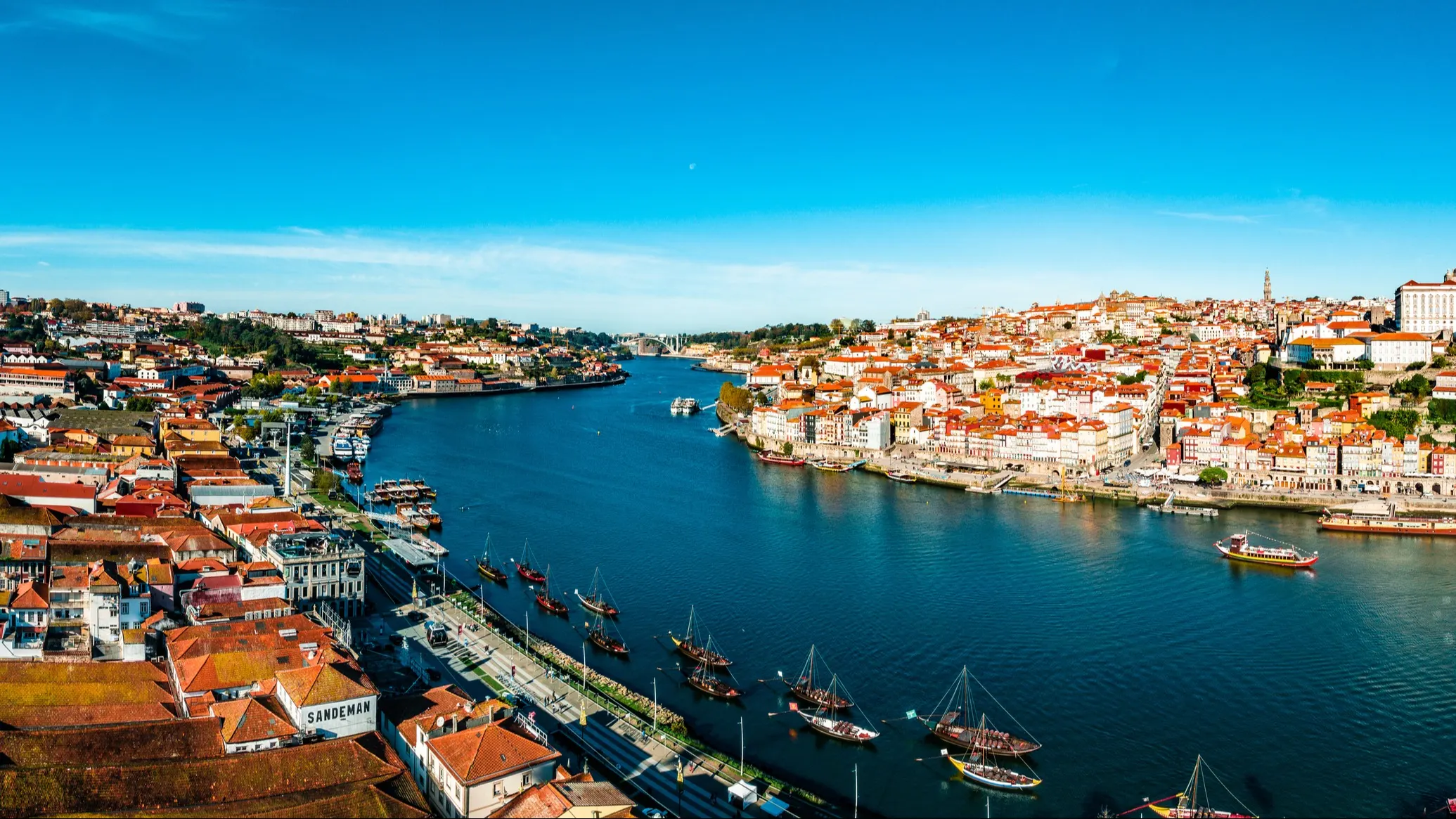
Noted for the city of Bragança, birthplace of the royal house of Bragança, this hilly region of Trás-os-Montes offers great opportunities for hiking and mountain biking with July and August temperatures in the 80s F to low 90s F. You’ll notice a spike in humidity compared to the coast, a fact that keeps the region’s farmers happily in business
Autumn again brings cooler temperatures with low 50s F—with cool, sometimes foggy nights. Just as on the coast, late autumn into winter brings rain from as early as October through April, and it tends to be a little cooler with temperatures in the 30s F. In spring, the olive trees are in bloom, and the sun again makes regular appearances, bringing high 60s F and low 70s F.
West Coast/Center
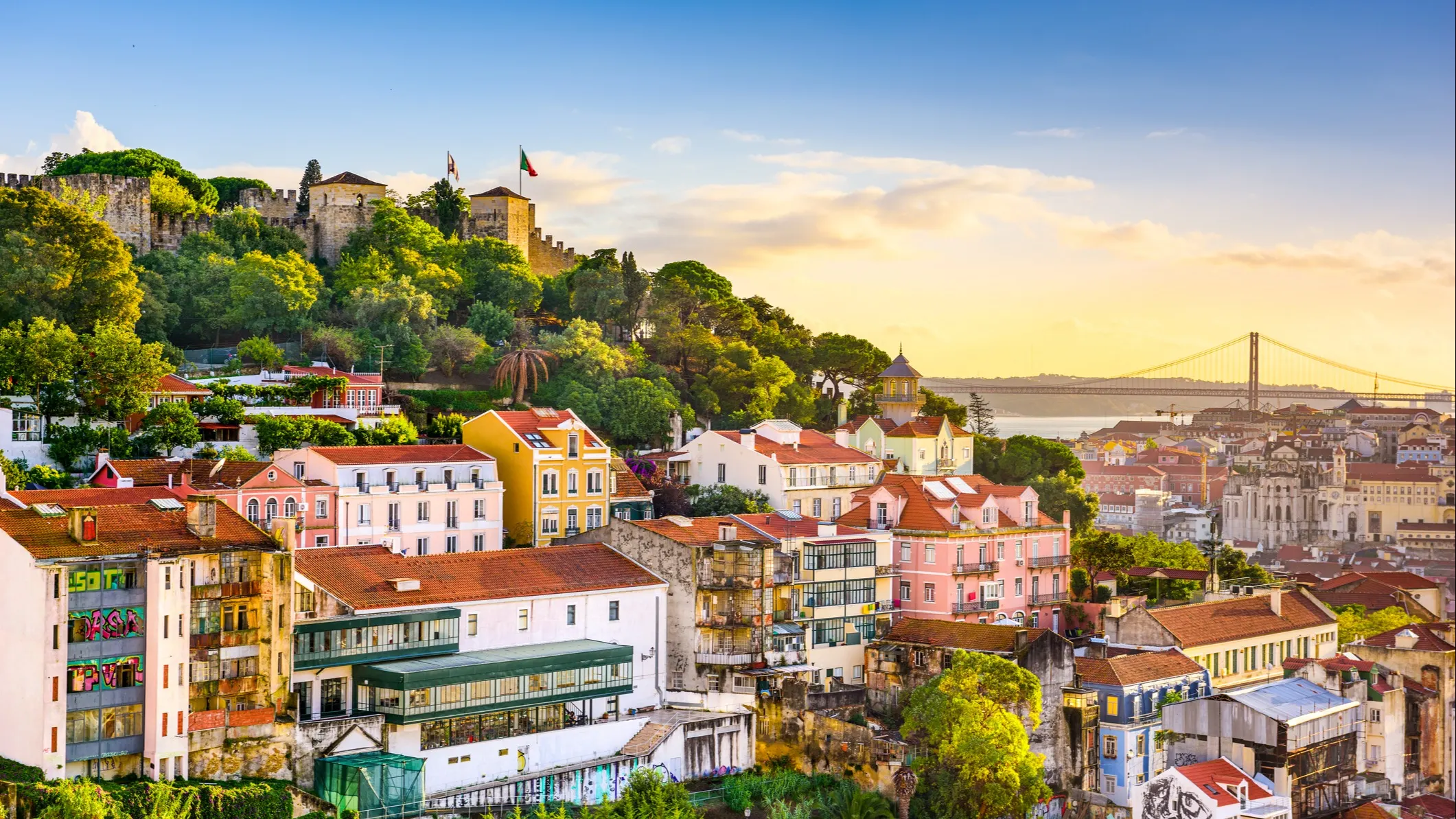
This region covers from the Douro River south to the Tejo River, and features cities like Figueira de Foz and Lisbon. In the middle on the coast, you’ll find the University of Coimbra, the city which was once the capital of Portugal, and its current capital of Lisbon at the mouth of the Tejo River. It is the north central coast line with fishing villages and beaches vying for the attention of the locals and tourists alike.
Summer brings comfortable temperatures from the mid 70’s F to mid-80s F with occasional highs in the mid-90s F. Come September, you’ll find breezy days, rain, and temperatures in the 70s F, with a slight chill near the ocean. In Mafra and Ericeira, those breezes will be stronger, but that makes fora world class surfing spot in Ericeira.
There’s a nip in the air during the holiday season, and frequent rainy days, when temperatures dip down to 30’s F at night and 40’s during the day, but unlike the north, they are relieved by days of warm Iberian sun. Springtime brings blooming vegetation such as lemon trees, and warmer days, but still cool nights.
Douro to Tejo Interior
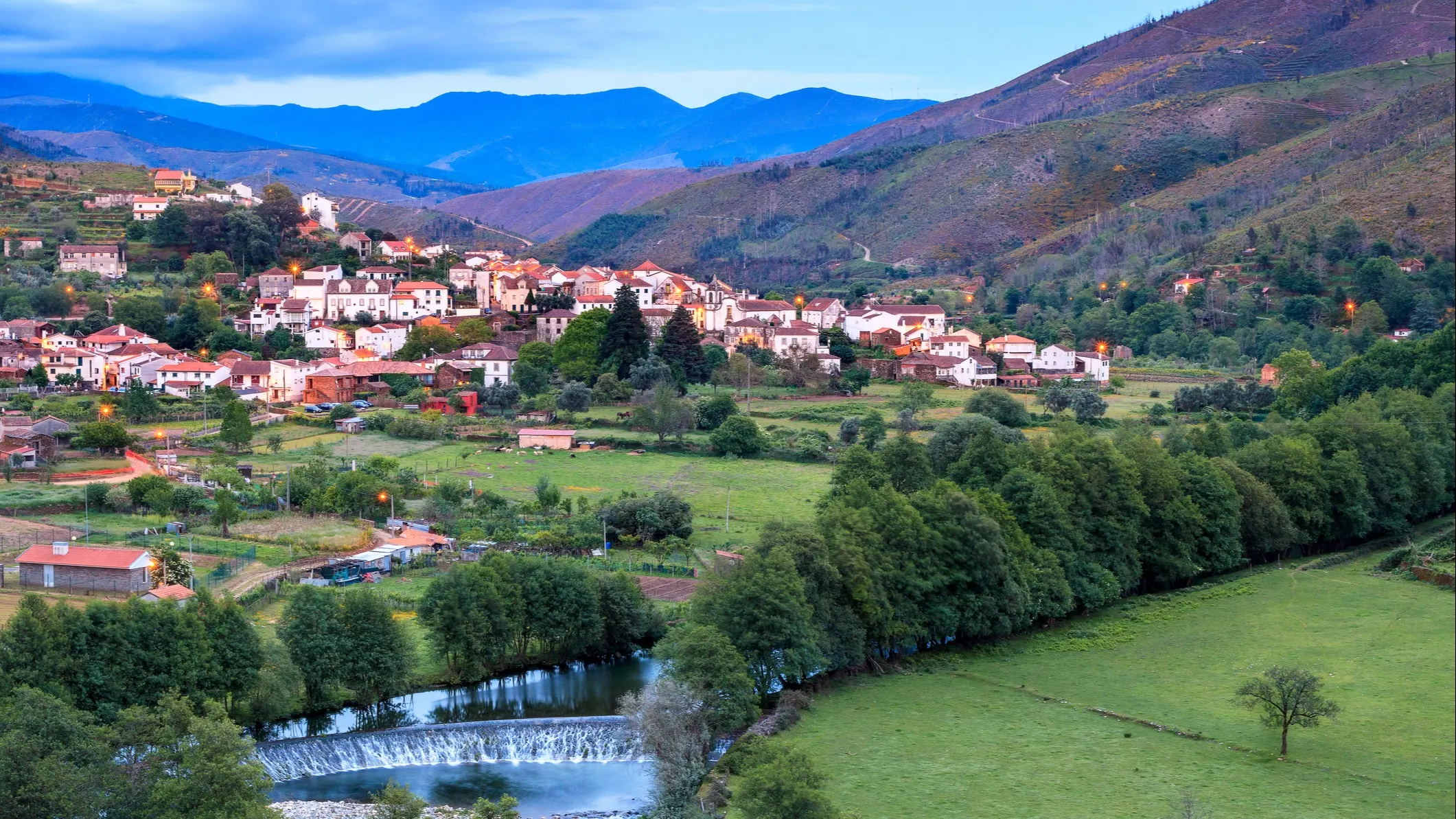
The main feature of this area is the famed Serra da Estrela Mountains, the highest range in the country, and the hills which lead up to it on the eastern side. Cherry farming means cherry festivals and the center of the range is home to the Vodafone Ski Resort, Portugal’s only one.
In summer, outdoor activities beckon as comfortable temperatures rarely reach 90 F. A rural area, only a few towns are sprinkled about like Manteigas, a village of sheep, cheese, woolens, and Swiss-style chalets nestled in the mountain valley. Larger towns surrounding the mountains provide modern amenities. Expats tend to choose the west side of the range due to its proximity to Porto’s airport, about 90 minutes away.
Autumn brings changing of the leaves and misty mornings and evenings. Temperatures reflect the mountain chill, 45 F to 55 F, night into day. When winter rolls around, you’ll discover why the handwoven woolen goods, made from local sheep wool, are so prized. By January, temperatures range from 25 F to 35 F. The mountains see their first dusting of snow by January, which allows for the six-week ski season to begin. Temperatures are in the 50s F going into the 60s F and the sun shines for most of the day.
Get Your Free Portugal Report Today!
Get Your Free Portugal Report Today!
Discover why we love a slower pace of life in Portugal and info on other European countries in our daily postcard e-letter. Simply enter your email address below and we’ll send you a FREE REPORT – Explore the Old World in Laidback Portugal.

By submitting your email address, you will receive a free subscription to IL Postcards and special offers from International Living and our affiliates. You can unsubscribe at any time, and we encourage you to read more about our Privacy Policy.
Tejo River South: The Alentejo and the Algarve
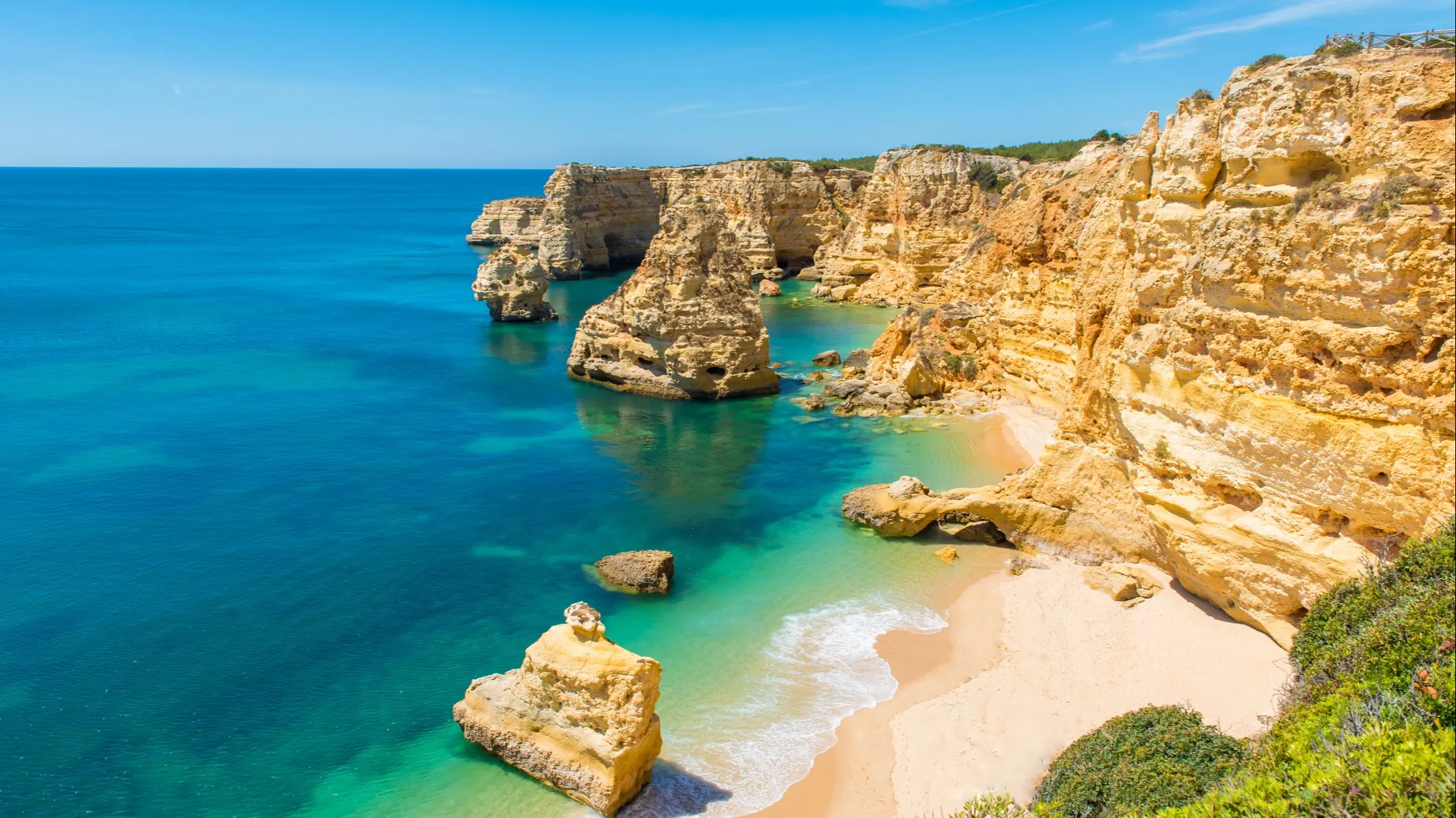
These two well-known regions of Portugal are hot in the summer, with temperatures in Évora easily over 100 F. The Algarve city of Faro, with an international airport, is more temperate. By late May the summer beach season is in full swing. The sun is intense, requiring the famed olive groves vineyards to be irrigated by Alqueva, the largest strategic water reserve in Europe.
In winter, the plains of Alentejo are subject to dry, cool, windy weather with temperatures in the high 40s F It is slightly less cold in Faro, but there is still a chill in the air with the winds from the Atlantic.
There’s hot and cold, with very short transitions, but spring in Alentejo does bring variegated fields of wild flowers punctuated by cork and olive trees, and the first leaves on the grape vines. Temperatures at this time of year vary between 46 F and 59 F. The region is so famed for its flowers that in August there is a huge Flower Festival in the city of Campo Maior.
In the south, with temperatures ranging from 68 F to 82 F, the sparkling beaches of the Algarve region are favorite vacation spots for not only the Portuguese, but visitors from Spain, Italy, France, the UK, the Netherlands, and Germany. There, the summers are particularly dry and sunny with 12 hours of sunshine each day and it’s the largest expat area in Portugal due to its resort-like feel most of the year.
Average Temperatures
Portugal’s average temperatures vary by region; generally, the north is always cooler and wetter than the south. The further south you go, the weather gets gradually drier and warmer, with warm to hot summers.
During the winter months of December to February, the weather is milder along the coast compared to inland, even in the north. The average temperature in January hovers around 50 F—50 F in Porto, 53 F in Lisbon, and 55 F in Faro. Periods of moderate winter weather can occur, influenced by the Azores Anticyclone that settles over the country, followed by periods of heavy rain and chilly winds, especially in the north. Known for its extreme weather, the city of Évora in the Alentejo region can be the coldest spot in Portugal, with record lows dipping below zero and extreme highs of over 100 F.
Since Portugal borders the Atlantic Ocean, this provides the country with shelter from the potentially extreme cold winds and frost, meaning they rarely occur, but occasional record lows of 32 F have been reported in the south. Inland areas, away from the coast in central and northern Portugal can experience intense cold, especially at higher elevations.
Summer in Portugal runs from June to mid-September, where temperatures are mild to cool in the north, warmer in the country’s center, and hot in the south. Daily averages in Porto in August are 68 F with highs of 77 F, and 75 F in Lisbon, with highs of 82 F. The Algarve coast is more sheltered, with average summer temperatures of 77 F and highs of 84 F. Moving inland to the Alentejo region, summer temperatures can be more extreme—a record high of 117 F was reported in the town of Amareleja in 2003.
Note that all of Portugal is subject to the occasional heat wave, stemming from nearby Africa, where temperatures can soar to 100 F or more while bringing along Sahara sands.
Spring and Autumn bring cool temperatures with rain in the north and milder to warm temperatures with no rain in the south.
Rainfall
The majority of rainfall in Portugal occurs during the winter months of December through February.
Northern Portugal receives the heaviest downpour, starting as early as November. The central regions receive a bit less, and moving south, even less yet.
The city of Braga, north of Porto, receives 57-inches of rain on average, while Porto receives 45 inches. Coimbra, a bit south of Porto, averages 35- inches of rain annually, and Lisbon around 31 inches. The southernmost region of the Algarve averages just 20-inches per year.
Some areas of Portugal on the Silver Coast and Sintra are blanketed with a sea mist in the mornings, making it feel damp like rain, but it eventually burns off, and the sun breaks through.
Extended periods of rain in the north and central regions are common, especially during winter, something to consider when deciding where to live. The central regions receive a bit less, and moving south, even less yet.
The Algarve is dry and sunny most of the year, with little to no rain, even in winter.
Hurricanes and Natural Disasters
Portugal is somewhat susceptible to a few natural disasters, such as forest fires, floods, and earthquakes. Hurricanes, tornados, and tsunamis, however, are extremely rare.
The arid heat and dry conditions are the perfect setting for forest fires, especially in the southern regions of the Alentejo and Algarve, where it rarely rains during the summer months. Wildfires happen often in these areas and can cause concern to those with respiratory issues.
The Great Lisbon Earthquake of 1755 destroyed Portugal’s capital, took many lives and devastated other parts of the country. It impacted the entire Iberian Peninsula, along with Northwest Africa. Fortunately, all earthquakes since that time in Portugal have been minor and barely felt by those living there.
Occasionally the Algarve is plagued with a dust storm from the Sahara Desert that turns the skies gray and makes the air quality poor. Outdoor surfaces and cars can be covered with dust, windows are dotted with spots, and life becomes a bit less sunny for the day.
Get Your Free Portugal Report Today!
Get Your Free Portugal Report Today!
Discover why we love a slower pace of life in Portugal and info on other European countries in our daily postcard e-letter. Simply enter your email address below and we’ll send you a FREE REPORT – Explore the Old World in Laidback Portugal.

By submitting your email address, you will receive a free subscription to IL Postcards and special offers from International Living and our affiliates. You can unsubscribe at any time, and we encourage you to read more about our Privacy Policy.
Outdoor Activities
Portugal’s temperate, year-round climate makes it perfect for outdoor enthusiasts. Even on winter days when the sun comes out, it can be the ideal time for hiking, biking, golf, tennis, pickleball, jogging, or walking.
With over 1,100 miles of Atlantic coastline, Portugal offers an array of water activities, even in winter, for adventure-seekers. Squeeze into a wetsuit to enjoy bodyboarding, surfing, kayaking, jet skiing, or kite surfing in the chilly surf. Even at the peak of summer, the water temperature reaches only 70 F in the south.
Hire a boat for a full or half day of deep-sea fishing to try your luck and see who brings back the biggest catch of the day.
Hop aboard a boat to explore the spectacular caves and grottoes of the Algarve. Choose an adrenaline-filled speed boat or a more tranquil ride that winds through the craggy rock formations and towering sea cliffs along the coastline.
Thrill seekers can gather in Nazaré, where the largest waves in the world have been recorded. If you’re daring enough, you can challenge the violent surf, or watch in awe as the best surfers in the world risk their lives trying to catch the perfect wave.
Take to the skies in a small plane and parachute at Sky Dive Algarve. Tandem dives can be done while tethered to an instructor and can be performed by just about everyone with little instruction.
Walk along the limestone cliffs overlooking the sea that can be found in many of the coastal areas. Or follow the wooden boardwalks over the sand for an easier footpath with stunning views.
Beachcombing for shells, sea glass, or sea creatures is a popular year-round activity and fun for the whole family. Pull up a lounge chair and catch some rays under the hot, summer sunshine. Rent an inflatable raft with a slide and plunge into the ocean with friends.
Stop at one of the many Algarve waterparks, miniature golf, theme parks, zoos, sand sculptures, or more for a day of family fun.
Clothing and Gear
A good pair of walking or hiking shoes with traction is the most valuable item of clothing needed for Portugal. Sidewalks throughout Portugal are paved with cobblestones, often uneven, and pose a tripping hazard to everyone. When cobblestones are wet, they are slippery and dangerous. Those with mobility issues may prefer to carry a cane or walking stick to help them to navigate tricky terrain.
In winter, wear layers with waterproof outerwear, boots, and umbrellas. Sweatshirts serve a dual purpose as a second layer over a shirt, under a coat, and can be kept on once you go inside cold buildings, which often are not heated throughout the country. Boots also need to be durable with slip-resistant soles for winter walking on wet, cobbled lanes.
Use plenty of sunscreen for summer outings and wear a hat, especially in the southern regions where temperatures soar. Keep a light jacket or scarf handy for evenings after the sun goes down or when the coastal breezes pick up. Lightweight pants, shirts, dresses, or skirts are a good way to look stylish and beat the summer heat.
When traveling by train, luggage must be lifted over a gap between the train and the track, and then up several steps. Backpacks may be easier for those who have difficulty lifting bags. Luggage and people are easily tossed around during train travel, so dress comfortably and pack light.
Portuguese people dress for comfort and the season. It’s rare to see women in high heels, due to the slippery, cobbled streets. Instead, women wear durable walking shoes, or sneakers, with jeans, leggings, or sweatpants. Jeans are common for men, along with hiking boots, sneakers, or shoes.
Conclusion
The best time to visit Portugal is in the spring or fall if you want to explore without the hassle of the summer tourist crowds unless you are looking for a beach holiday, then do visit in summer.
For those hoping to retire or move to Portugal long term, ask yourself what type of weather you can live with to be happy. If you hate hot, dry summers with little to no rain, and lots of summer tourists, pass on the Algarve. If you prefer spring-like summers and wet, cool winters, try the central or northern areas.
For those who like a bit of frost, snow, and skiing in the winter, think about the north inland areas near the Spanish border.
For those who relish crisp, cold winters, hot, dry summers, and a more rural landscape, the Alentejo may work for you. Be careful of the scorching summer heat by exploring early in the day and staying indoors in the afternoon.
The hottest time of the day in Portugal is late afternoon, between 5-7 pm. Mornings and evenings, even in the peak of summer in the south, are cool, brisk, and lovely. This is ideal for early morning hikes, or bike rides before the heat of the day sets in.
For the best weather in Europe, consider Portugal for your next vacation or your perfect retirement destination. A tiny country in the western corner of Europe with so much to offer, it’s no wonder that over half a million foreigners call Portugal home.
Get Your Free Portugal Report Today!
Get Your Free Portugal Report Today!
Discover why we love a slower pace of life in Portugal and info on other European countries in our daily postcard e-letter. Simply enter your email address below and we’ll send you a FREE REPORT – Explore the Old World in Laidback Portugal.

By submitting your email address, you will receive a free subscription to IL Postcards and special offers from International Living and our affiliates. You can unsubscribe at any time, and we encourage you to read more about our Privacy Policy.
